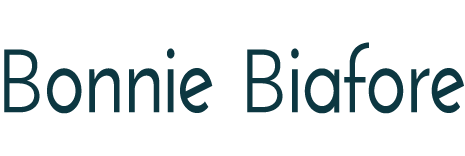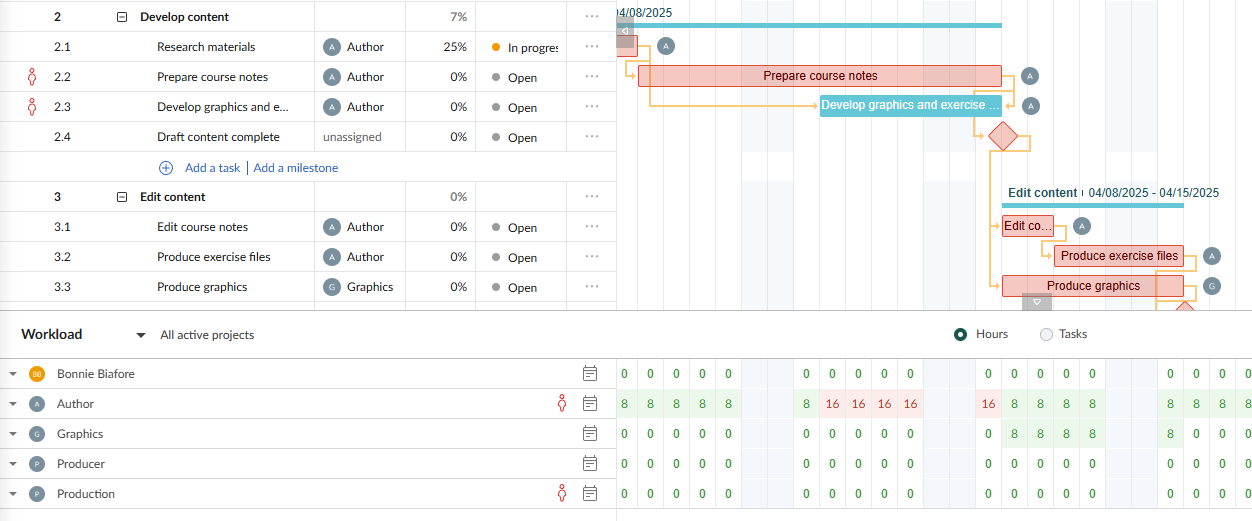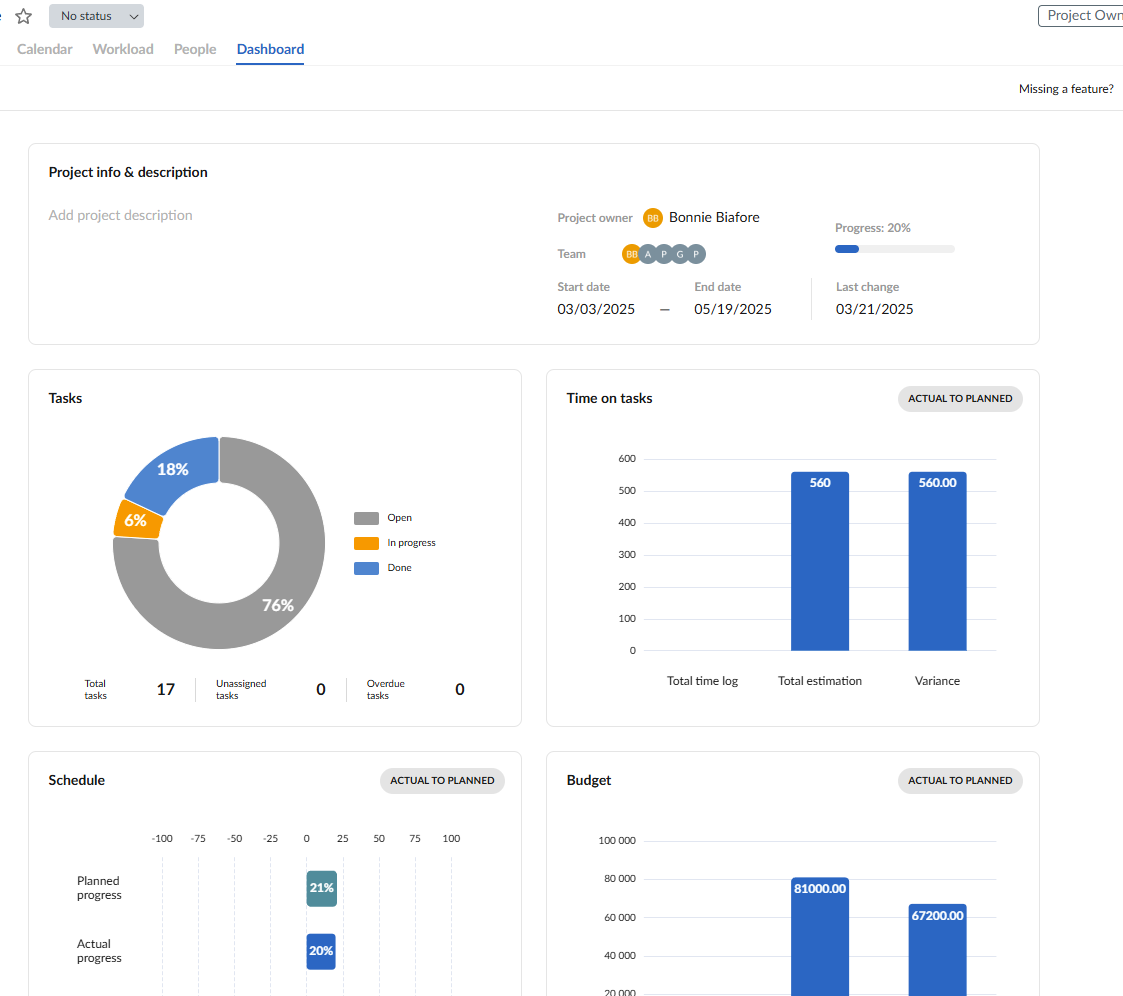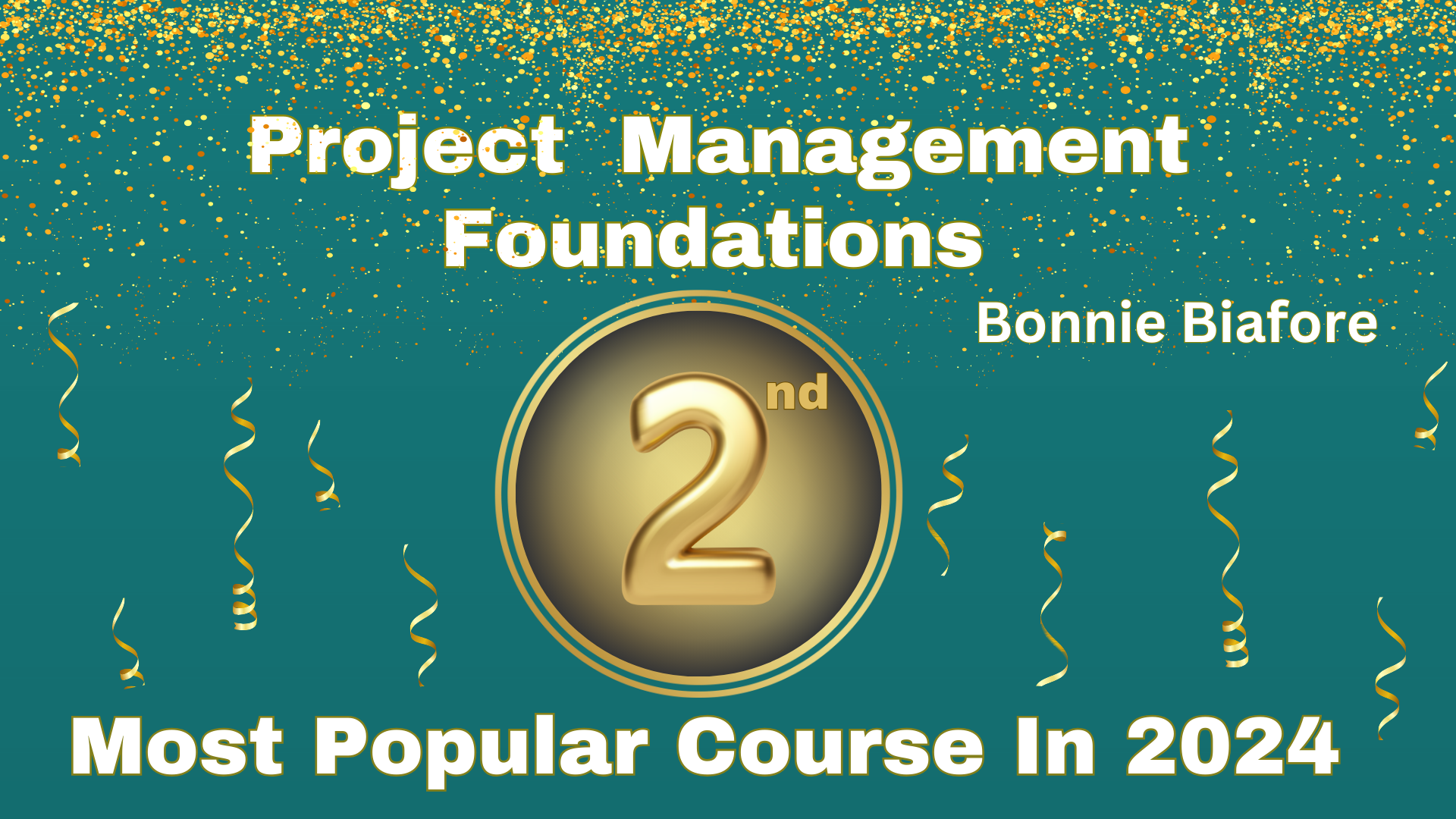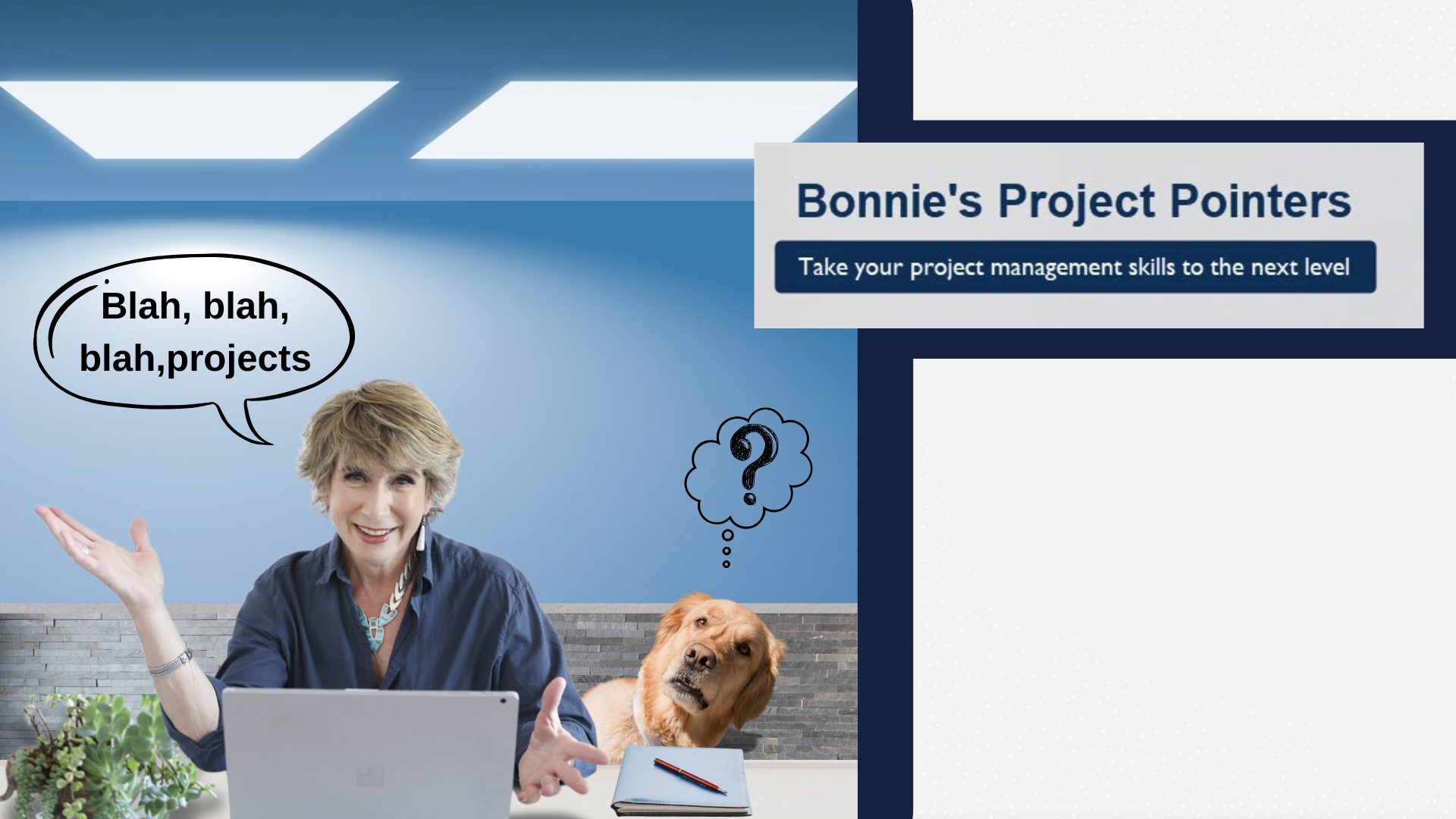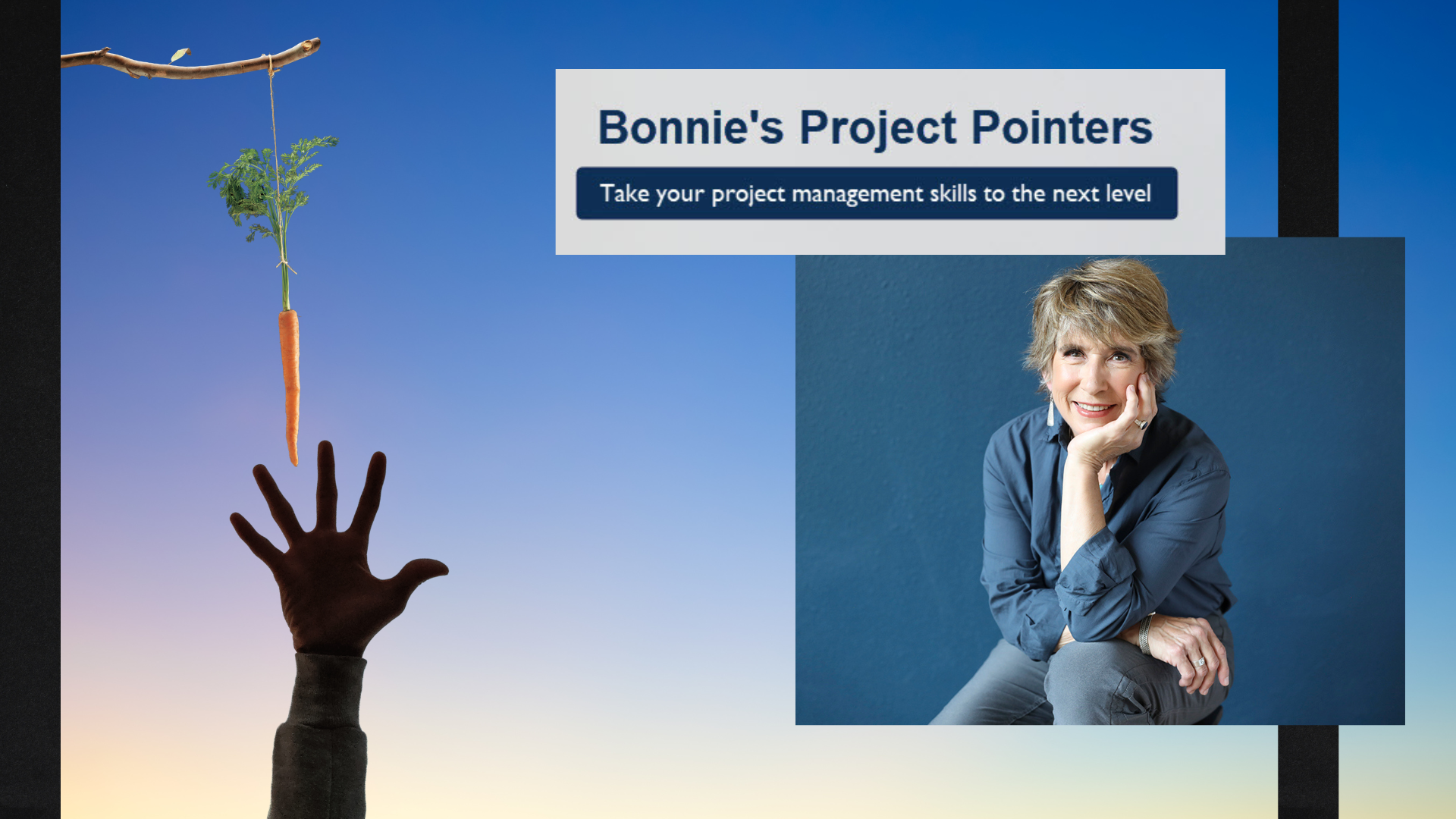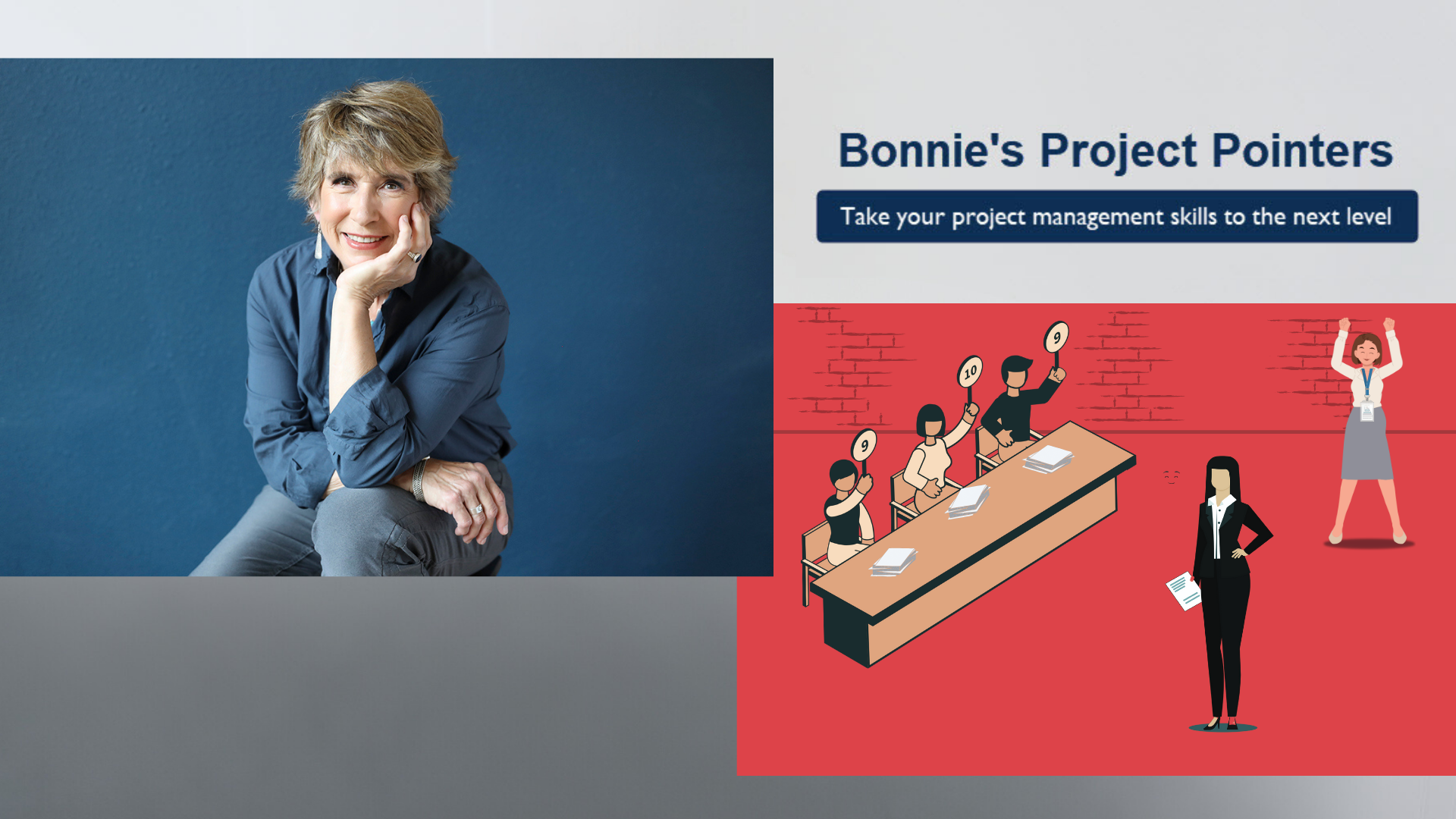GanttPro: Another Online PM Tool That’s Worth a Look
 I took a look at GanttPro, an online project management tool that isn’t covered in my LinkedIn Learning course. It’s a medium-level PM tool at a competitive price. It offers quite a few features without bombarding you with a suite of applications like some other products. While it lacks some things most PMs would want, they have links on their website asking for suggestion. Here’s a quick overview of what it can do.
I took a look at GanttPro, an online project management tool that isn’t covered in my LinkedIn Learning course. It’s a medium-level PM tool at a competitive price. It offers quite a few features without bombarding you with a suite of applications like some other products. While it lacks some things most PMs would want, they have links on their website asking for suggestion. Here’s a quick overview of what it can do.
Note: I spent about a day experimenting, so I might have missed a few things. I found their help videos and knowledge base quite good when I needed them.
- Setup. Getting started is super simple. Create an account and it asks you if you want to create a project. You can start from scratch or use one of their templates (categories like consulting, construction, software development, product launch, web design and more). Use “By methodology” to choose either an agile or waterfall template. And when you click the Create new project button, you’ll see the Gantt chart.
- Create project Gantt charts. It’s called GanttPro, so of course it has a Gantt chart feature. It’s easy to add tasks, subtasks, and milestones. You can indent and outdent to build your task outline. And you can drag tasks around to reorder the list. Or import tasks from an Excel file or Microsoft Project.
- Create task dependencies. With GanttPro, you can drag from task bar to task bar to create dependencies, or you can add the Predecessor field to the Gantt table to specify them with task IDs. GanttPro supports all four types of dependencies (FS, SS, FF, SF). Clicking a dependency in the chart opens a dialog box for adding lag or lead. When you change task dates, GanttPro recalculates the schedule.
- Add other task info. The Gantt chart table starts with basic fields like task name and assigned resources. GanttPro has other fields like priority, duration, start and end date, budget, actual cost, status and more. Custom fields come in all the usual data types, although they are simplistic and sadly (at least for me) without formulas. If you need to make the same type of changes to multiple tasks, click the Checkmark icon just above the Gantt chart table. GanttPro tracks the history of your past actions so you can undo previous steps. (Click the clock face icon at the very top right of the window. Then, you can select an action to see the project before that action was performed.)
- Manage resources. You can send emails to invite your team to your GanttPro environment. There are also virtual resources to represent roles, skills, materials, costs. You can assign cost rates to resources, a project calendar, or a personal calendar for specific resources. It indicates resource overallocations with a red person icon in the Gantt table as well as in the Workload view.
- Track time. There’s a time tracker for logging time spent on assignments. People can run a timer as they work, or they can enter hours after the fact.
- Display scheduling features. You can save baselines and then display the current schedule compared to the baseline, as shown below. You can also click buttons at the top to display the critical path, show overdue tasks, or expand or collapse the list. Say you have people who want to see status, but you don’t want them to see all the dirty laundry. In GanttPro, a filtered view shows what you want to show your client. Then, you can create a shared private link to that filtered view, so anyone with the link has view-only access to it.
- More views. Like other software, it has Board, List, Calendar, Workload, and Dashboard views. As you navigate through the tool, you’ll sometimes see a “Missing a feature?” link, so you can cast your vote for new functionality.
- View status with reports and a dashboard. There isn’t a lot of reporting: it boils down to filtering tasks with different criteria. When you open the Reports screen and click Reports under development, you can tell GanttPro what types of reports you want. The Dashboard has widgets that you can turn on or off and reorganize, but you can’t create your own.
- Manage budgets and portfolios. With estimates and actual costs, you can track income and expenses in projects. Like other tools, this cost management might not satisfy accounting nerds, but it’s a start. GanttPro doesn’t have any integration with other financial apps either. You can add projects to different portfolios and then review them with a portfolio Gantt chart, List, Workload, and Dashboard view.
- Communicate with the team. People involved with projects, whether internal or external to your organization, can collaborate by commenting, mentioning people, and attaching files. Click a task to open the side panel and then leave a comment or click Attach files. @mentioning works the usual way. You can also create a link to the task when you want someone to review it.
- Integrate with other software. GanttPro integrates with a few major players, including Slack, OneDrive, Google Drive, Microsoft Teams, and Jira Cloud. But it’s not the long list of integrations offered by other tools.
- Help and support. When you point at icons above the Gantt chart, a popup box describes the feature. Click Learn more to jump into a new browser tab with the GanttPro knowledge base. There are dozens of videos that show you how or you can search the knowledge base for articles.
To sum up, GanttPro could be a good fit for small businesses working on small to medium-sized projects without big demands for customization. It would also be a good Gantt chart add-on if you already have other PM software that doesn’t offer a Gantt chart feature.
If this sounds interesting, here’s info on pricing as of March 2025. The core plan doesn’t offer a lot, so the Advanced plan is a good place to start at $10 per user per month (paid annually). If you need resource management or portfolio management, you’ll want the Business plan ($17 per user per month paid annually). There’s also an Enterprise plan, which I didn’t look at. Their 14-day free trial gives you time to see which level works for you.
For more about other online project management tools, check out my Project Management: Choosing the Right Online Tool course.
_______________________________________
This article belongs to the Bonnie’s Project Pointers newsletter series, which has more than 88,000 subscribers. This newsletter is 100% written by a human (no aliens or AIs involved). If you like this article, you can subscribe to receive notifications when a new article posts.
Want to learn more about the topics I talk about in these newsletters? Watch my courses in the LinkedIn Learning Library and tune into my LinkedIn Office Hours live broadcasts.
